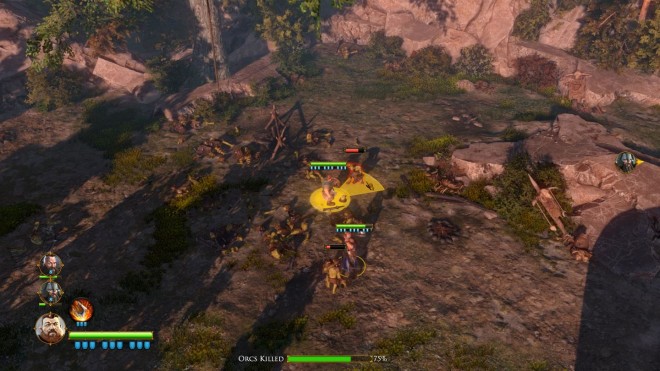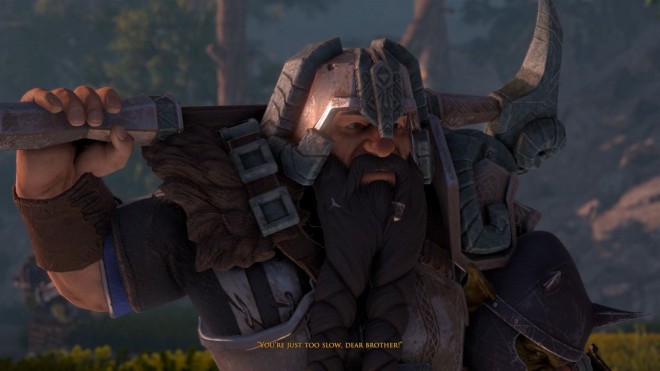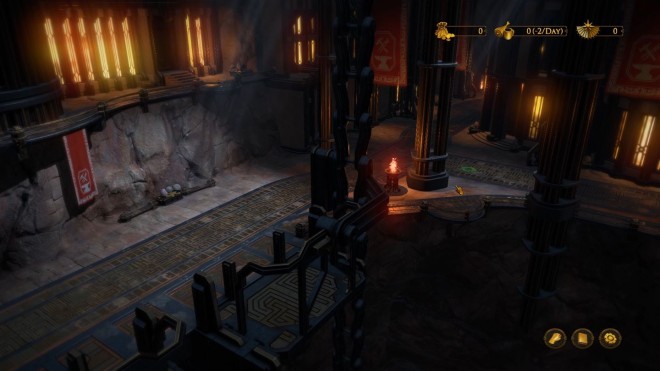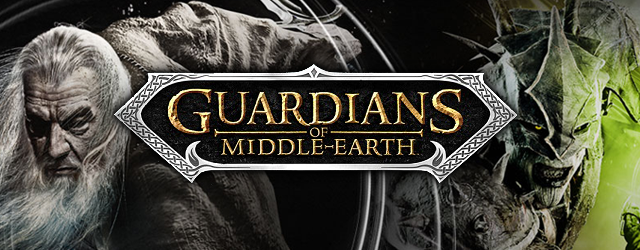The Dwarves opens with a tutorial battle set in the distant past. Through a sequence of battles and cut scenes, this opening manages within the first five minutes to summarise everything that is good and bad about the incredibly mixed experience that the game offers.
The tutorial begins with the player leaping into battle from a high vantage point, and the game clearly salivates at the thought of demonstrating the physical knockback effect that is the cornerstone of its fighting engine. Unfortunately, it fails to lock the enemy in range, meaning that the sense of impact is lost unless chance places a group of enemies in the way. Before even attempting the leap, the player will already have a sense of how dismal the battle camera is, and it won’t be long before they realise how useless the user interface and controls are. Should the player make it through this torturous opening battle, they will be rewarded with a cut scene of the highest quality, featuring superb writing, animation and voice acting.
In stark contrast to how appalling I find the battle scenes in The Dwarves, I find the plot elements, based on the novel by Markus Heitz, to be absolutely superb. There isn’t a wasted line or a bad actor among the entire crop, and the story and dialogue itself is into The Witcher territory at times. The narration is fantastic, and as the player wanders around the otherwise dull (and terribly rendered) world map, the warm, expressive tone of the narrator and the chatter among core characters is an absolute joy. It’s a bizarre mix because I found myself wanting battles to end quickly so that I could get back to the storytelling, yet at the same time, the map itself is terribly dull compared to the relatively attractive, highly detailed combat maps. Indeed, The Dwarves is a real mixed bag if ever I’ve seen one…
Here’s what I liked:
Superb Story — Although The Dwarves cuts out significant proportions of Heitz’s original novel, it does a fantastic job of creating a compelling narrative about how the central character (Tungdil) develops from the role of a simple scholar to a competent, likeable hero. The reduction in content compared to the books is managed well, and will be unnoticeable if you’ve never read them, or don’t plan to. The reduction is only possible because of the superb narration and interparty chat, which fills the player in on all relevant backstory and incidental detail, and it even fills in where the game clearly couldn’t accommodate a large portion of the book. Because of some of the other faults with The Dwarves, I can’t help but think that the makers intended the game to be much bigger. However, where they have chosen to replace chunks of missing gameplay with voice acting and narration, at least they have done so to a very high standard.
Wonderful Voice Acting and Characters — Neither the story, nor the narration would be worth a damn if the characters in The Dwarves were missing a trick, and thankfully, the game is flawless here. From the likable, smiling Tungdil to the bloated monstrosity that is his primary foe in the game, every character is well animated, well voiced and suitably scripted. There are fourteen playable characters in total, and a host of enemies that have meaningful dialogue, and whilst the game isn’t long enough to explore them all fully, it does leave the player with a lasting impression and a desire to learn more – which in most cases, Heitz’s book will happily oblige.
Mostly Good Looking — The cut scenes in The Dwarves are basically flawless, matching the quality of top tier games in almost every way, from facial expressions to lighting to sheer visual quality. Exploration and battle maps are also excellent, with lots of light and shadow detail that overlay interesting, distinctive landscapes set in traditional fantasy locations such as forests, caves and canyons. There are some exceptions such as the campaign map, which looks fine when still, but tears and clips in an awfully distracting way whenever the player moves. Panning the camera in battles is also a major pain and the screen jerks, stutters and tears terribly when the camera is panned or zoomed. Fire and other effects are well enough realised, although combat effects that rely on physical impact can be much harder to pick out when in the heat of battle.
Here’s what I didn’t like:
Appalling Gameplay — I am on the verge of saying that I hate playing through the battle scenes in The Dwarves, although I think that would be a touch too strong. Though, I do really dislike them to the point where as I was playing the game, I would actively take decisions in an attempt to avoid battle. The issues are manifold, but broadly centre on a control system that is nigh-upon unmanageable, appalling/non-existent AI, friendly fire, a useless user interface and lots more. Take the controls for example. The Dwarves plays somewhat like a MOBA in that the characters perform their normal attack automatically. To use one of three special attacks, players need only to select and then aim. There are also context-sensitive actions that allow players to finish a downed enemy. Both special attacks and contextual actions use the same button, and a number of times I wasted action points by repeatedly performing the same special attack when I actually wanted to use a finisher is beyond measure. Another major issue with the battles is that friendly AI simply does not use special attacks at all, forcing the player to switch between characters and micromanage constantly.
Ridiculously Random Scenarios — As if battling through appalling controls and unrewarding gameplay wasn’t bad enough, The Dwarves tends to throw hideously unfair battles and objectives into the mix. The first taster of these comes early when the player must chase down two enemy trumpet bearers who simply run away whilst constantly calling for reinforcements. Killing them is a tiresome chore, yet the game repeats this mechanic several more times before the end. On a similar note, boss battles spring out of nowhere, often resulting in all but the luckiest player (there is very little skill involved in the fighting mechanic) having to repeat a battle three or four times due to bad luck. And that leads to my next point…
Often Broken — The Dwarves takes minutes and minutes to load each scene, level, save or whatever else it is that needs loading. In a game where death comes quickly and often randomly, this is hugely annoying, but it is just one of several major issues. I’ve covered a few graphical issues already, but the game does seem to keep coming up with new and surprising glitches. It also locks up completely on occasion, and there are simply a ton of other amateurish mistakes that I can hardly believe crept through quality testing in a game at this price point, published by a large house like THQ Nordic.
No Multiplayer — The subtitle says it all. In a squad-based RPG where the player spends most of his time micromanaging each character and hopping between them to make the best use, a local multiplayer mode for two or even four players would have massively increased the pleasure factor that The Dwarves has to offer. As it stands, no thought appears to have been given to one, either local or otherwise.
Wrap Up:
Unfortunately, I feel like I gave up my position on The Dwarves within the opening two paragraphs, but I’ll try to summarise. Imagine a game that has the potential to exceed every expectation you had going into it in some regards, but is so poor in others that you can barely stand to play through the worse sections. That, for me, is The Dwarves. It is a huge missed opportunity in my opinion, and as a result, it is all the more disappointing, especially at nearly $40. Steer clear, unless you are a real glutton for punishment, or have a diehard curiosity about packing an entire novel worth of story into ten frustrating hours.
Score: Limited Appeal
The Dwarves was developed by King Art Games and published by THQ Nordic on Xbox One. It was released on December 1, 2016 for $39.99. This copy was provided for review purposes.





